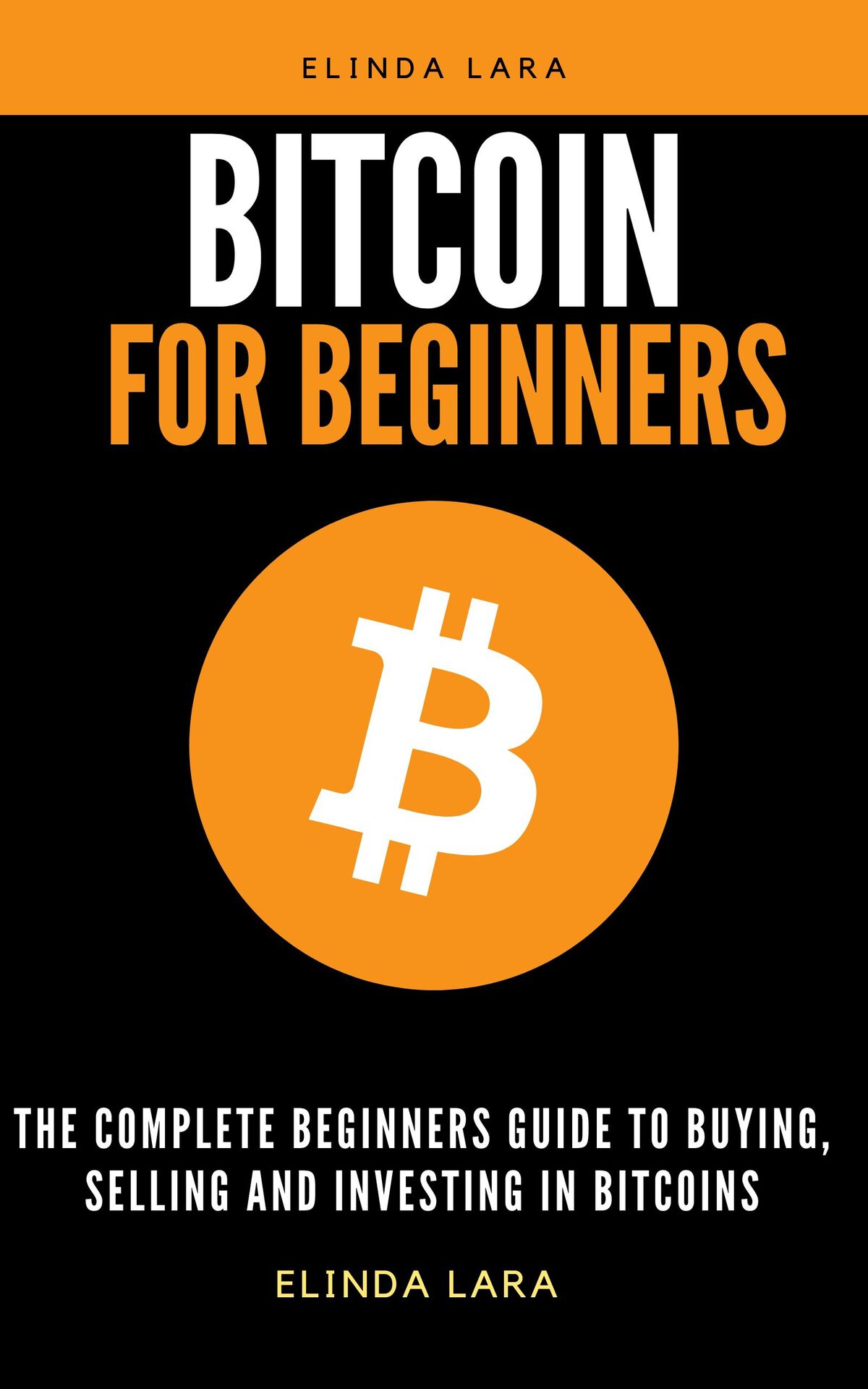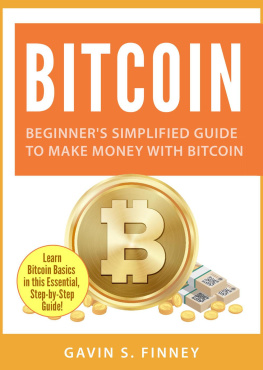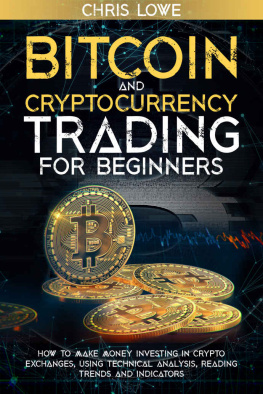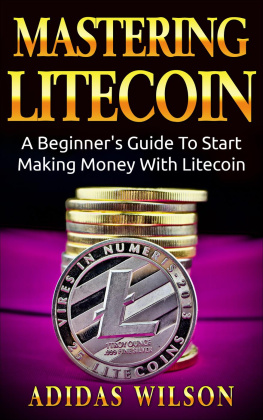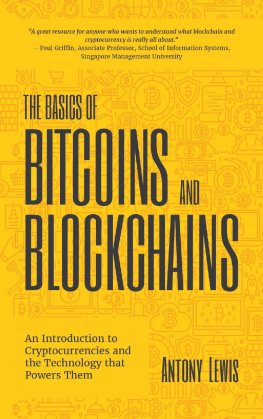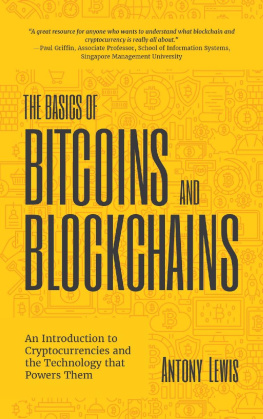BITCOIN FOR BEGINNERS
Table f Cntents
Intrductin
Thrughut histry, the primary methd f cmmunicating with smene ver lng distances was sending a letter. This culd take days, weeks, even mnths, with n guarantee the letter wuld arrive at all. Even then it was nly ne-way cmmunicatin, fr a cnversatin t take place it wuld take lnger still.
Email changed cmmunicatins drastically. Messages were sent and received instantly, frm anywhere in the wrld. Befre email, peple didnt even recgnize the drawbacks f the ld cmmunicatins system. nce email became widely adpted, the drawbacks were instantly bvius, and weve never lked back.
This is true f ur current system f mney tday. Mst peple dnt stp t think abut the drawbacks f ur current mnetary system, but a new technlgy is already beginning t change that. This new technlgycalled Bitcinis rapidly changing the way we view mney.
This guide will explain t yu what Bitcin is, give a laymans view f hw it wrks, and explain exactly hw yu can btain Bitcin, stre them safely, spend them, and even create them yurself. Bitcin is a cmplicated subject, but in this guide I will give yu everything yu need t knw in rder t understand the system and get started.
What is Bitcin?
When peple say Bitcin they are referring t ne f tw things.
A digital currency.
A payment system used fr sending and receiving mney nline.
Typically the term is used t apply t the currency itself, but the payment system is every bit as imprtant as the currency. Let me explain bth.
Bitcin as a Currency
Bitcin is a digital, decentralized, peer t peer, pseudnymus currency based n cryptgraphy. If that sentence made n sense t yu, dnt wrry - Ill break it dwn fr yu.
Digital Bitcins exist nly as cde, they d nt exist as anything physical. Peple can (and have) made physical representatins f Bitcin, but ultimately they are based in the digital wrld.
Decentralized There is n central bank r institutin that issues r cntrls Bitcin. It is a grup f individuals all ver the wrld wh run the prgram that keeps the mnetary system running.
Peer t Peer Yu cntrl yur wn Bitcin, and when yu send
Bitcin t smene else, it ges directly t them. There are n banks r middlemen.
Pseudnymus While all Bitcin transactins are publically viewable in an pen ledger called the Blckchain (well get t that later), the sender and receiver are nly knwn as a string f numbers and letters. If yure careful abut yur identity, using Bitcins can be dne annymusly.
Based n Cryptgraphy The strength f Bitcin as a digital currency lies in the cde, which uses strng cryptgraphy t ensure that the cins cannt be accessed withut prper permissin.
Bitcin is the first digital currency that has these characteristics, and as a result it is the first digital currency t becme widely adpted n the internet. As f June 2013, it is handling nearly 60,000 transactins each day, and this number is accelerating quickly.
Bitcin as a Payment System: Slving the Duble Spend Prblem
As a new digital currency, Bitcin is impressive, but the truly revlutinary aspect f Bitcin is in a new payment system. Befre I explain this system, let me briefly describe ne f the primary reasns why digital currencies have always failed in the past.
In the physical wrld, mney cant be in tw places at nce: nce yu spend it, it is inside stre As cash register and it cant be in stre Bs cash register. With digital currency, this isnt necessarily true. Since digital currency is cmputer cde, the same mney culd actually reside in multiple places. This is bviusly a huge prblem, and wuld lead t rampant fraud.
Hwever, we d transact huge amunts f mney digitally tday, s hw cme we dnt see mre duble spending? Well, we have services that take care f the prblem, such as PayPal. They review all the transactins t ensure that the same mney isnt spent twice.
But there are substantial prblems with using a centralized service t deal with the duble spend prblem. First, they are a single pint f failure. This means that if PayPal were t have technical prblems r perhaps if they dnt like what yu are trying t purchase then yu cant mve yur mney at all. Als, yu have t pay them fr their service, typically with fees that are 2% r even higher.
Bitcins payment system slves the duble spend prblem, des it withut relying n a single pint f failure, and requires substantially smaller fees. It des this by using a public ledger called the Blckchain, which Ill discuss in mre detail later in the bk.
Histry f Bitcin
Where did Bitcin cme frm? Even thugh it is nly five years ld it already has a unique stry.
The idea fr Bitcin came frm a develper named Satshi Nakamt. That was the name n the riginal paper that laid ut the technical aspects f the new prject but it was a pseudnym. The real identity f Satshi Nakamt is still unknwn.
The riginal paper was written in ctber 2008. The nine-page paper briefly tuches n each f the majr aspects f the system that Satshi envisined, as well as naming this new Peer-t-Peer Electrnic Cash System with the mniker that it uses tday: Bitcin.
After the paper was published, Satshi created the first sftware prgram t begin mining (the prcess f creating Bitcin). In January 2009, Satshi mined the first set f Bitcin, named the Genesis blck. Shrtly after, he annunced the prject t a grup f cryptgraphy experts, many f whm were a part f the cypherpunk mvement. Satshi develped many f the ideas f Bitcin frm previus cypherpunk wrks. Initially, this grup f cmputer experts apprached Bitcin as an interesting hbby, discussing hw the system may r may nt wrk, and hw gvernments may react t it.
It wasnt until the beginning f 2010 that Bitcin was used fr real-wrld transactins. By this time, a larger cmmunity f develpers had reviewed the cde alng with Satshi and released versin 0.2, imprving the client. The first Bitcin transactin fr a physical gd ccurred n May 21, 2010, when a Bitcin user named Laszl purchased a pizza wrth $25 fr 10,000 Bitcins! This transactin spawned the famus Bitcin Pizza Index, which cntinually updates the price f that first pizza (as f the writing f this bk, wrth ver $1.2 millin).
The Bitcin cmmunity slwly grew ver 2010. Mt. Gx, the largest Bitcin exchange, was funded, and made it easier t buy and sell Bitcin. The price eventually reached parity with the US Dllar in February 2011, and sn after began rising rapidly.
This rapid rise was primarily a result f increased media attentin. Several new sites began cvering Bitcin, and average internet users began buying them. Als, news f The Silk Rad began t emerge. This hidden website allwed users t buy and sell illegal merchandise mstly drugs using Bitcin fr security and annymity.
This newfund attentin, and scrutiny, drve the price higher still, reaching a high pint f $31 in June 2011. But this rapid price increase wuld sn deflate.
The largest exchange, Mt. Gx, had their database cmprmised by hackers. This led t sme large-scale thefts f Bitcin ttaling in the hundreds f thusands f dllars, which shk cnfidence in the new currency. The price drpped dramatically, and many wrte ff Bitcin as a failure.
But Bitcin wasnt finished, and it slwly began t build mre users and fllwers ver the next year. By the end f 2012, there were mre users than ever befre, and mre businesses began accepting Bitcin as payment fr gds and services.
2013 was truly the breakthrugh year fr Bitcin. Starting the year arund $13, the price began rapidly increasing as Bitcin received mre news cverage than ever befre. Well-knwn internet brands began accepting Bitcin, such as Wrdpress and Reddit. New users came int the market quickly, and because it isnt easy t btain new Bitcins, the demand utstripped supply and prices rse further. By April 10 th , the price was a staggering $266 per Bitcin.

